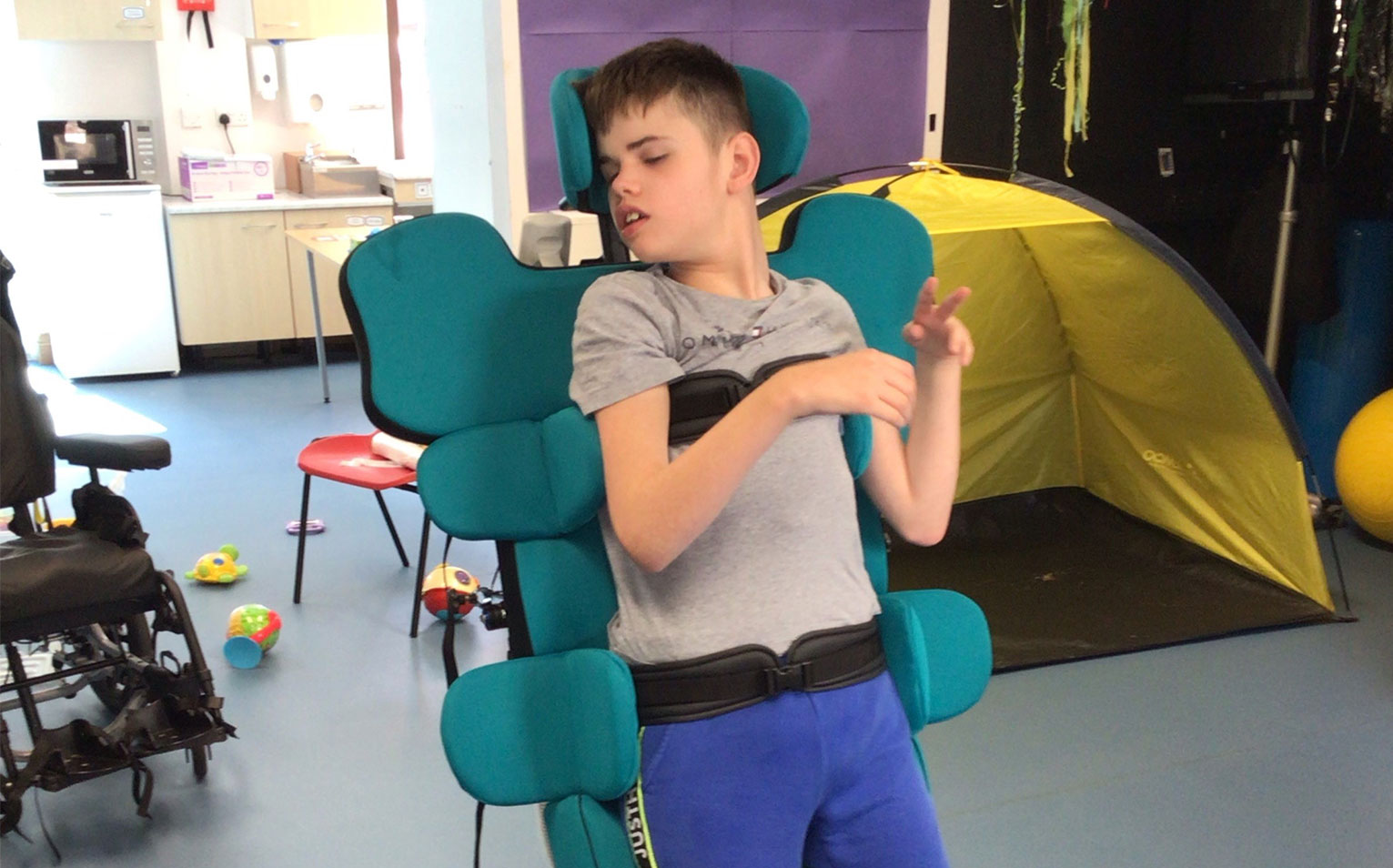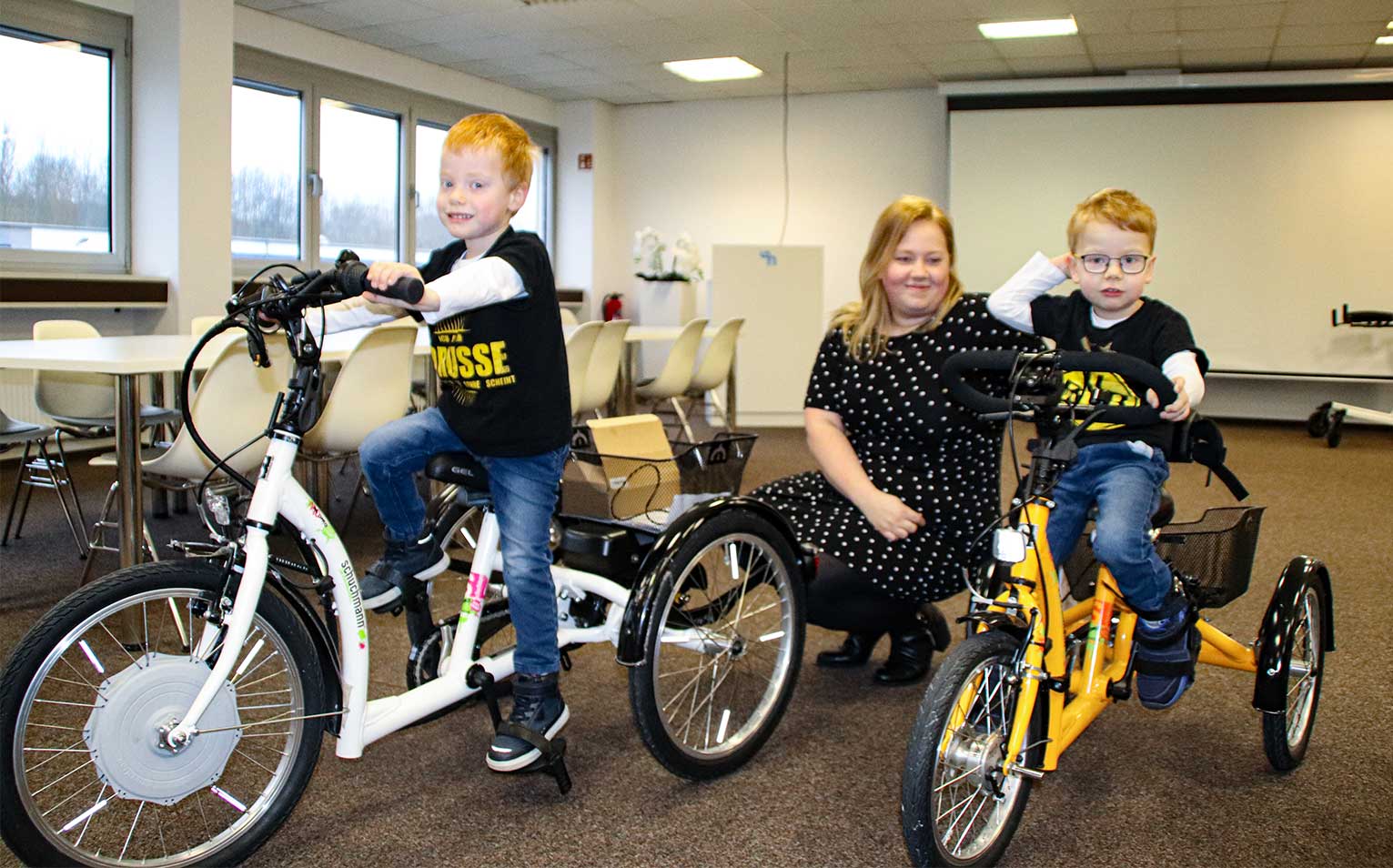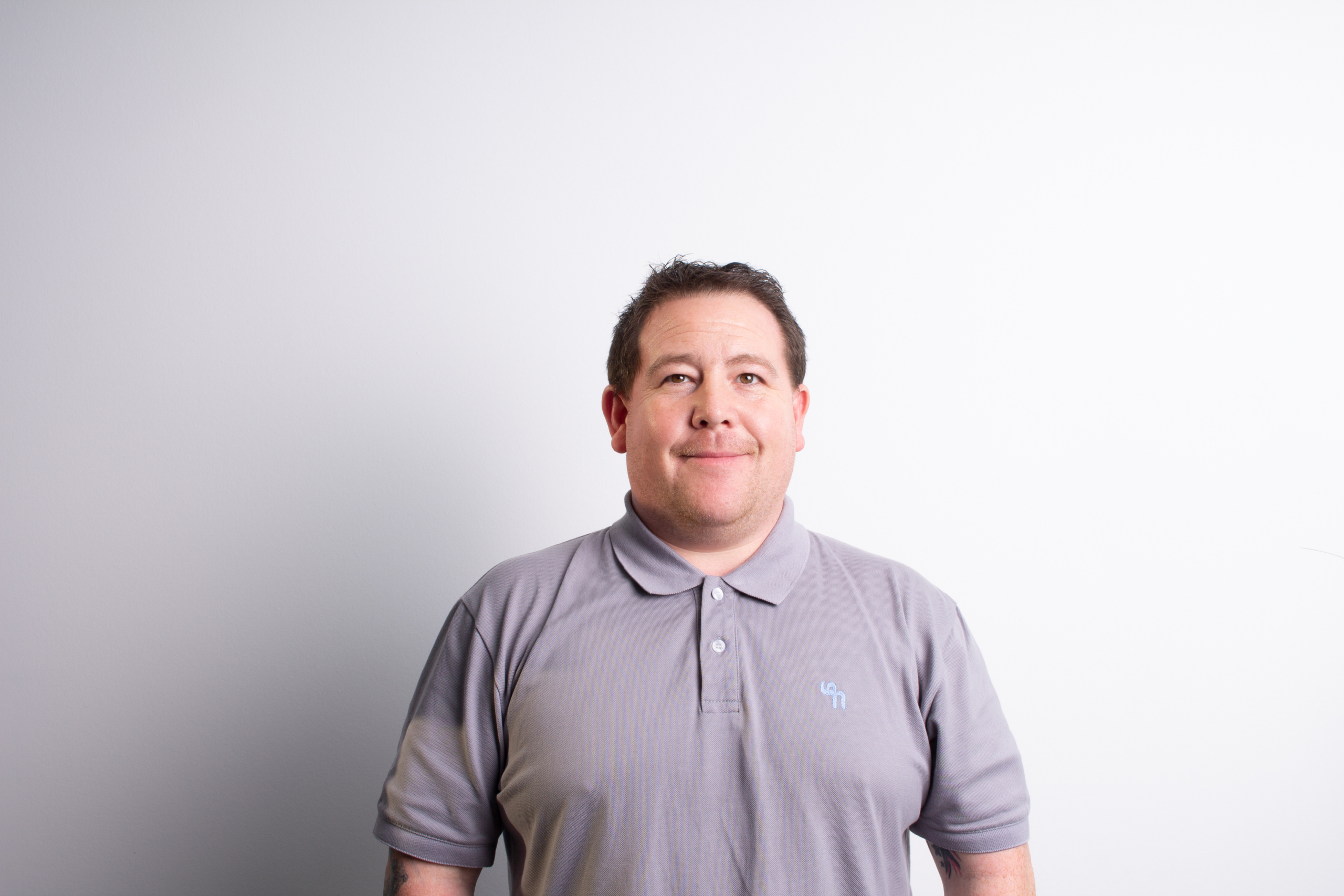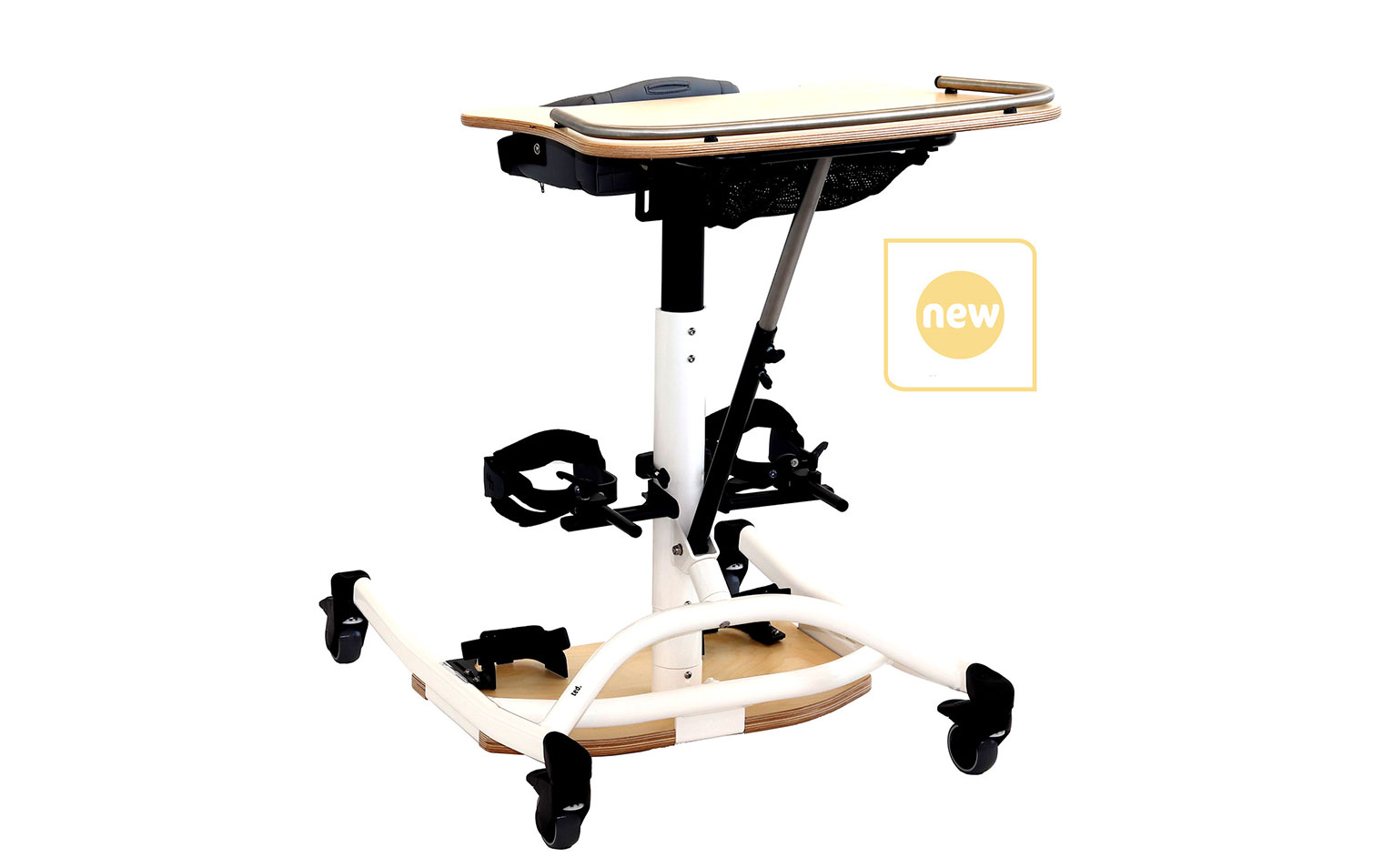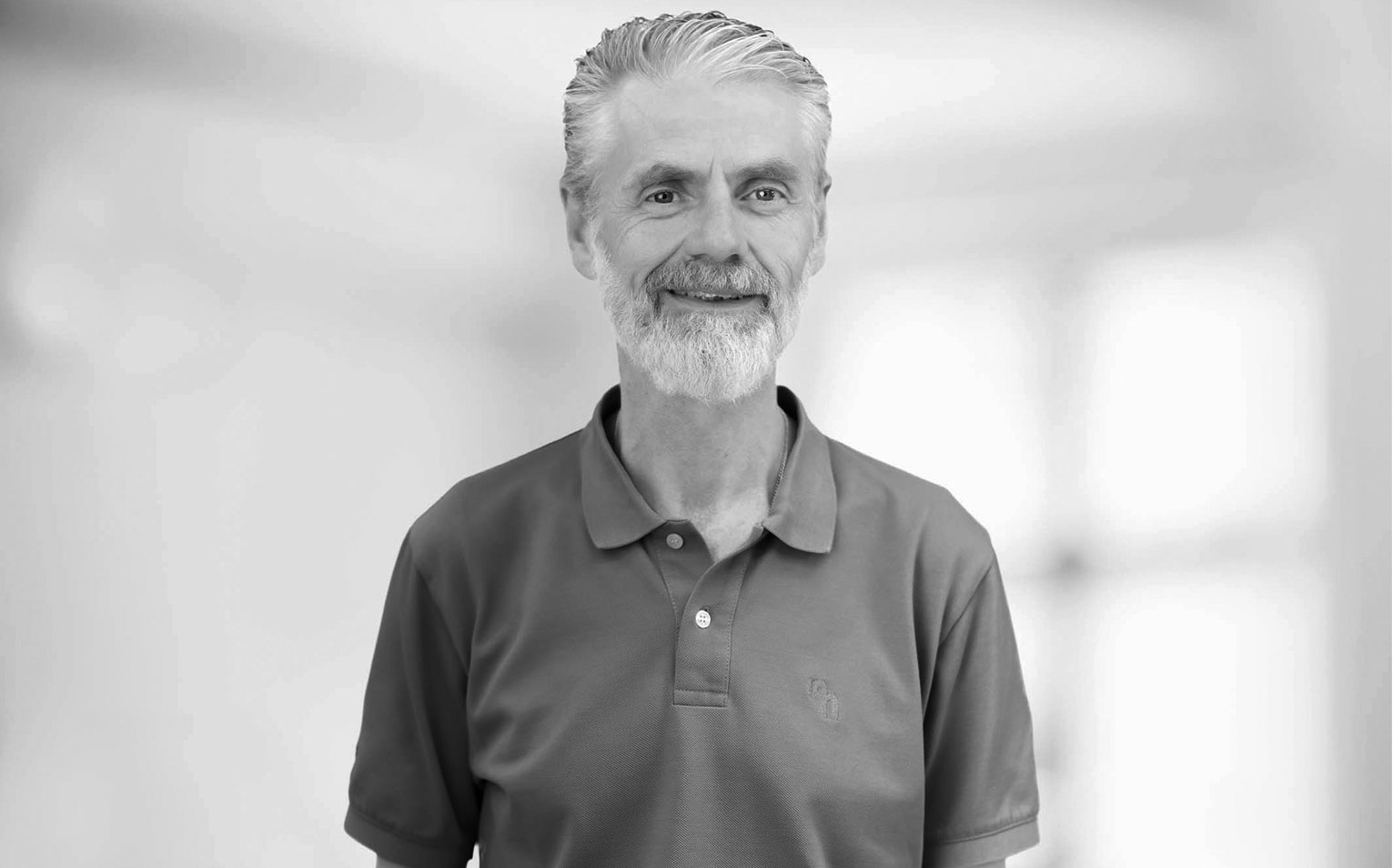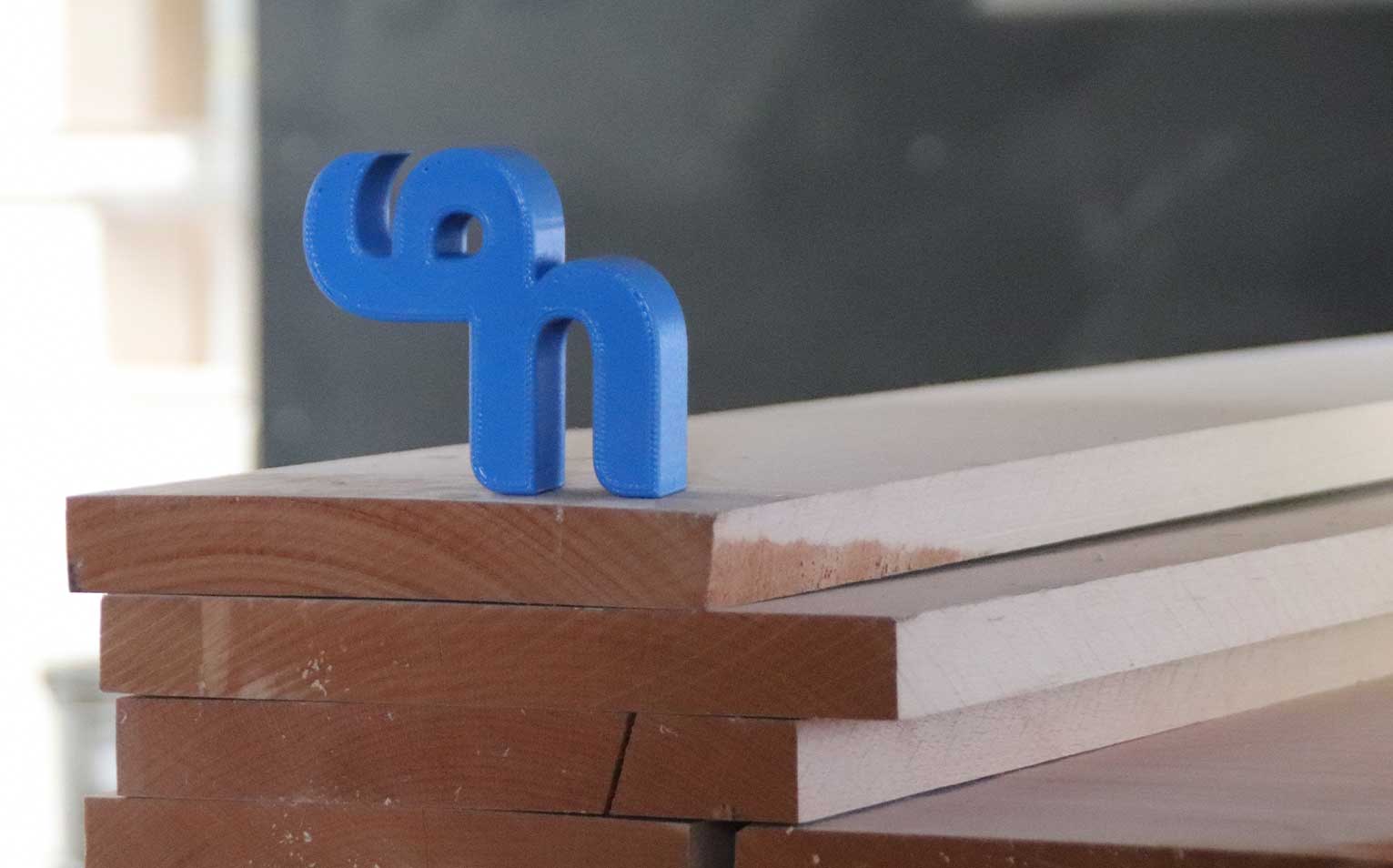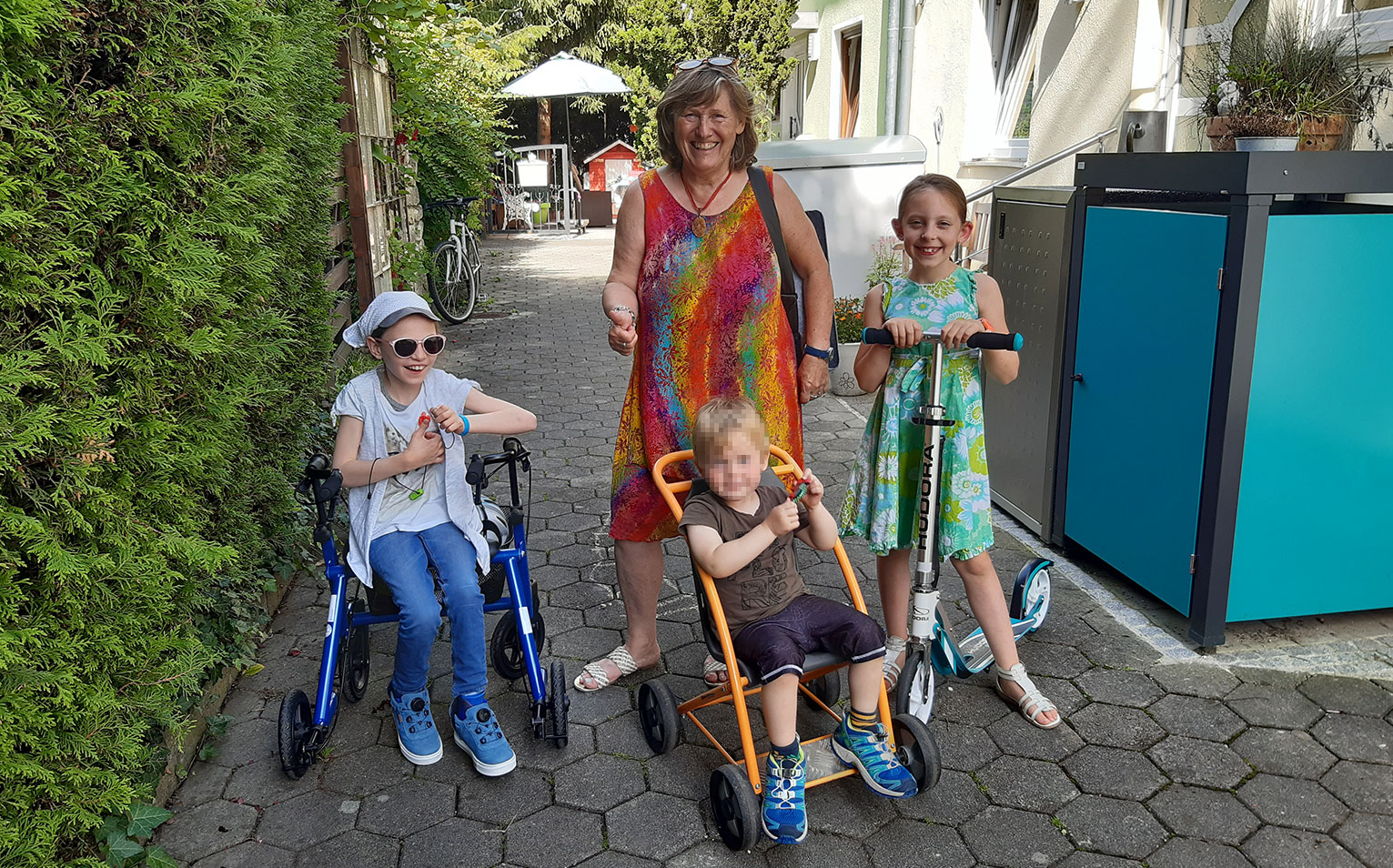For improved head control.
Flexible, adaptable, practical and with a great therapeutic benefit. The new headrest with adjustable side guides offers many advantages
This new headrest has been designed specifically for use on our madita fun. and madita hd. hairs. Many users of our products have complex headrest requirements due to underlying diseases such as cerebral palsy and neurodegenerative disease, such as muscular dystrophies and atrophies. Different muscle ratios on the two sides of the body can be exacerbated by the pulling force of the heavy head and can lead to scoliosis, pelvic obliquity and a tendency to lean sideways.
The headrest with angle-adjustable lateral support has a corrective effect
The child or young person may support or lean their head to the side. Thanks to the variable adjustment of the headrest you can make a gentle correction back towards midline. The result; muscular tension can be regulated, pain reduced and the cervical spine relieved. By supporting the user’s head properly they can concentrate much better on activities such as listening, watching and playing. Eating can also be made easier in some cases along with the users field of vision and their ability to hear and listen to their friends, family and carers.
Adaptation to the developmental process
The headrest can be adjusted or adapted as the child develops and changes; more support can be introduced if head control deteriorates or less can be given should it improve. Also it offers a special advantage for patients who need to wear protective helmets as it can be adapted to suit both the helmet and the head.
Our new headrest with adjustable lateral guidance is primarily designed for children and adolescents in with moderate to complex physical needs. For people with more complex head support needs other options can be explored and interfaced if needed.
The head support can also be used with our supine standing frame till. head control is also an important consideration here. When standing for longer period‘s of time, the users head can be difficult to control and an asymmetrical posture usually becomes even more apparent. This is why this new headrest can be readjusted again and again following the development of the user.


